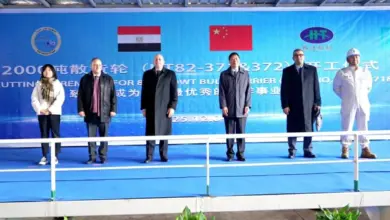
HONG KONG (Reuters) – Hong Kong anti-government protesters crowded shopping malls in running clashes with police on Sunday, with several suffering bloody wounds a day after parts of the Chinese-ruled city became a battleground after five months of unrest.
A human chain in the upmarket Hong Kong island mall of Cityplaza, in Taikoo Shing, turned into a bloody face-to-face conflict with police, running up and down escalators where families with young children had been window shopping just minutes before.
Police said protesters had vandalized a restaurant after a peaceful chanting of slogans.
Several people were wounded, one man in a white tee-shirt being beaten with sticks by protesters. Another man lay in a pool of blood on the pavement.
Broadcaster RTHK said district councillor Andrew Chiu was among the wounded and that part of his ear had been bitten off. It was not immediately possible to verify the report.
A kitchen knife lay on the ground outside the mall.
“These police are not what they used to be,” said Julie, 24, giving police the middle finger. “They come in here and push us around. It is not right.”
Police made several arrests.
There were scuffles, confrontations and vandalism in malls in the New Territories towns of Tai Po, Tuen Mun and Sha Tin, where police fired pepper spray as protesters hurled abuse.
Pro-democracy protesters in Hong Kong, which Britain returned to Chinese rule in 1997, battled police across the territory’s main island on Saturday, furious at Communist Party leaders in Beijing and perceived Chinese meddling with Hong Kong’s freedoms, which China denies.
People scuffle with riot police at a shopping mall in Tai Po in Hong Kong, China November 3, 2019. REUTERS/Kim Kyung-Hoon
They have vandalized Hong Kong businesses seen as being pro-China and in July daubed China’s Liaison Office, the key symbol of Chinese sovereignty, with graffiti.
Cleaners swept up broken glass at the Hong Kong office of China’s official Xinhua news agency on Sunday, one of the buildings vandalized on the 22nd straight weekend of protests when activists hurled petrol bombs and set fire to metro stations.
Xinhua condemned the attack by what it said were “barbaric thugs” who broke doors and security systems and threw fire and paint bombs into the lobby.
“The practice of the black rioters once again shows that ‘stopping the violence and restoring order’ is Hong Kong’s most important and urgent task at present,” a spokesperson for Xinhua said in a Facebook post.
Police fired tear gas, rubber bullets and a water cannon at protesters on Saturday and early Sunday as the violence spilled from Hong Kong island across the harbor to Kowloon. One of the protesters’ key demands is an independent probe into perceived police brutality.
There have been several injuries, including a protester shot in the chest and a policeman slashed in the neck, but no deaths since the protests began in June.
Hong Kong returned to China under a “one country, two systems” formula which guarantees its freedoms for 50 years. China’s People’s Liberation Army (PLA) has a garrison in Hong Kong but troops have remained in barracks since the protests began.
Protesters last month targeted a PLA barracks with lasers prompting troops to hoist a banner warning they could be arrested. Senior PLA officers have said violence will not be tolerated.
Hong Kong leader Carrie Lam will fly to China this week to discuss how to make it easier for Hong Kong people to live and work on the mainland, her office said on Sunday.
Lam, despised by pro-democracy protesters, will arrive in Beijing on Tuesday for a meeting the next day of the “leading group” for developing the Greater Bay Area of southern China.
The group has already met twice, “endorsing a number of measures to facilitate Hong Kong people to develop, work and reside in the mainland cities of the Greater Bay Area, as well as strengthen the convenient flow of people and goods”, her office said.
The idea was to attract “high-end talent” from Hong Kong with tax breaks and encourage “innovation and entrepreneurship” from young people in Hong Kong and Macau.
Lam has promoted the Greater Bay Area as a way to provide jobs for people in Hong Kong and ease social tension.
The megalopolis of the Greater Bay Area is made up of nine mainland cities, including Guangzhou, Zhuhai and Shenzhen, and the two special administrative regions of Hong Kong and Macau, a former Portuguese-run enclave that returned to China in 1999.
Reporting by Joyce Zhou, Farah Master, Donny Kwok, Twinnie Siu and Jessie Pang; writing by Nick Macfie; editing by Peter Graff and Jason Neely
Image: People scuffle with riot police at a shopping mall in Tai Po in Hong Kong, China November 3, 2019. REUTERS/Kim Kyung-Hoon




